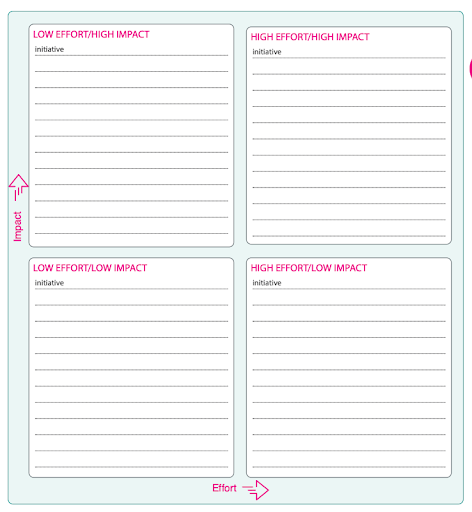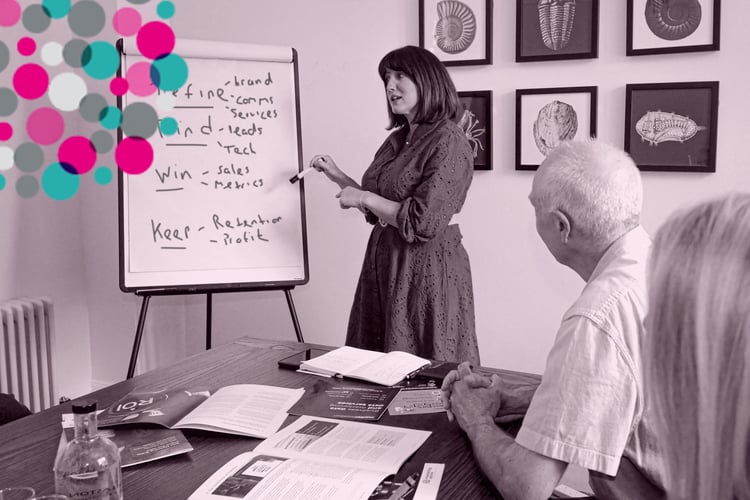A couple of weeks ago we spoke to two business owners who, despite the current economic climate, were feeling surprisingly positive about the future.
As one of them said: “If you act positively, you get positive results. And we’ve definitely seen that happening at our company.”
It’s a great mindset. But how do you put it into practice and get on the front foot, especially during times of uncertainty?
Here’s a three-step process that will help you understand how changes in the market might impact you - and how your marketing needs to change as a result:
- Understand your new reality
- Decide how your business will respond
- Translate those decisions into new marketing activities
Let’s dive into each of those in more detail.
What’s the new state of play?
No market or sector stands still for long. Here are two exercises that will help you understand how your context has changed and how those changes might impact your business.
The first is PESTLE - standing for politics, economics, social, technological, legislation and environment. This is a quickfire exercise. Don’t spend too much time trying to think of every single thing that’s changed. Jot down headlines and then move on:
- How has the political context changed for your business? eg. recent political instability
- What are the economic changes that will impact your business or market? eg. a forecasted two-year recession
- How might your business be impacted by changes in our social and cultural behaviour? eg. people spending less on discretionary purchases
- How might recent changes in how people use technology impact your business? eg. more people working remotely
- How might recent changes in legislation impact your business? eg. green legislation
- What are the environmental changes that will impact your business or market? eg. consumers wanting to save on energy bills
These questions should surface a range of different changes, both large and small. Now we’re going to assess how they might impact your business through a quick SWOT exercise. This is something you’re probably familiar with, but just in case…
- Where are your current strengths?
- What are your weaknesses?
- Are there any changes highlighted during PESTLE that could be opportunities?
- Are there any changes that could represent a threat to the company?
The combination of these two exercises will help you to unpack all of the changes in your market and understand where the risks and opportunities are for you right now.
How should your business respond?
Good marketing always aligns with your wider business strategy. So before we can work out how your marketing needs to change, we need to understand what the wider business should do.
Choose the most important things you identified during your SWOT analysis. Then ask yourself what your business needs to do to avoid the downsides or maximise the upsides. You should end up with a list of possible next steps that you could take.
We can then use a simple impact/effort quadrant to prioritise the actions that will deliver the most impact for the lowest effort.

Actions in the top right that can deliver a large impact for little effort are a no-brainer. Likewise, actions in the bottom left that require a lot of work for little reward should be benched.
What should marketing do to support the business?
The final step in this process is to translate the key business priorities into marketing activities. A good first step here is to define exactly what we mean by ‘marketing activities’ - as this can confuse people.
We break marketing down into four key pillars:
- Define - know what your potential customers look like and what your product or service can do for them
- Find - identify ways to target customers based on their behaviour and habits
- Win - devise strategies to close sales and create customers
- Keep - monitor customer churn (loss) and create retention activities to remedy it
Taking into account everything you’ve identified so far - the changes in your market and the steps your business will take to respond - what would you need to do in order to define, find, win and keep customers?
Here are some example questions that might help get the ball rolling:
- Is your value proposition relevant to current market conditions? Does it need to change to suit customers’ current needs and priorities?
- Are you able to generate sufficient leads to meet our growth objectives? If not, what do you need to change to make this possible?
- Does your pricing, sales process or sales collateral need to be updated?
- Have you identified at-risk customers and taken steps to retain them? Likewise, have you got a plan in place to retain your most-valued customers?
The three-step process we’ve just walked you through is a simplified version of our ‘adapt and accelerate’ framework. It’s a set of five exercises that will help you and your business respond effectively to change.
We originally developed it during the pandemic. But have since used it to help our clients to navigate all kinds of different situations.
Could you do with a second opinion?
Weathering change and uncertainty is one of those areas where having been there and done it before really pays off. And our team have experience in spades. If you’re wondering where your business is at and what you should do next, feel free to get in touch.




